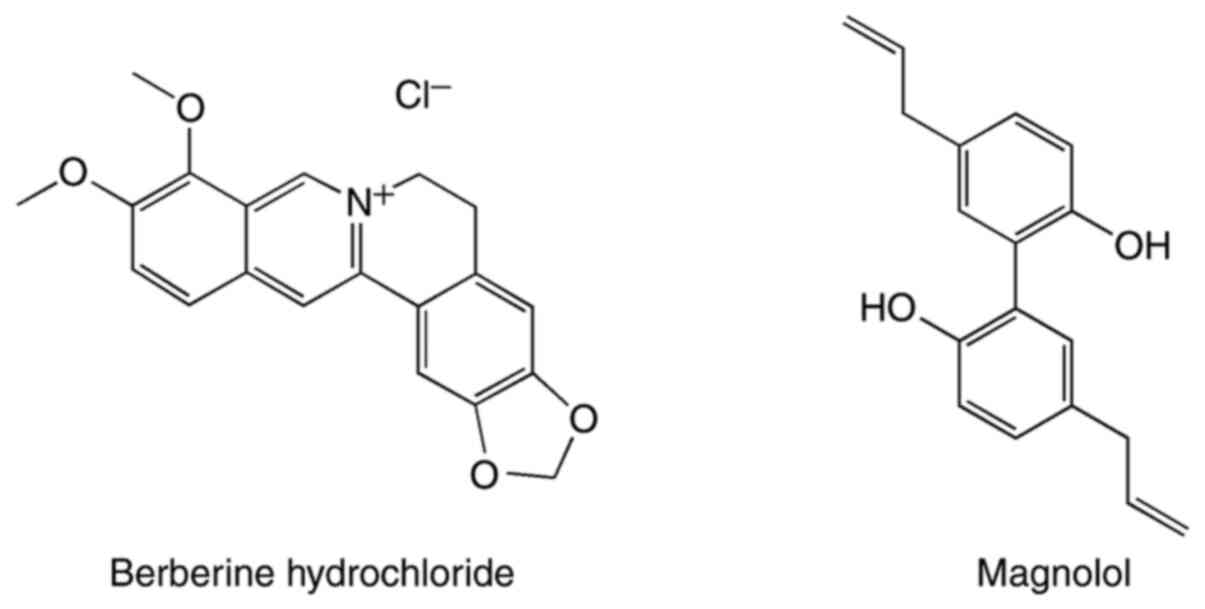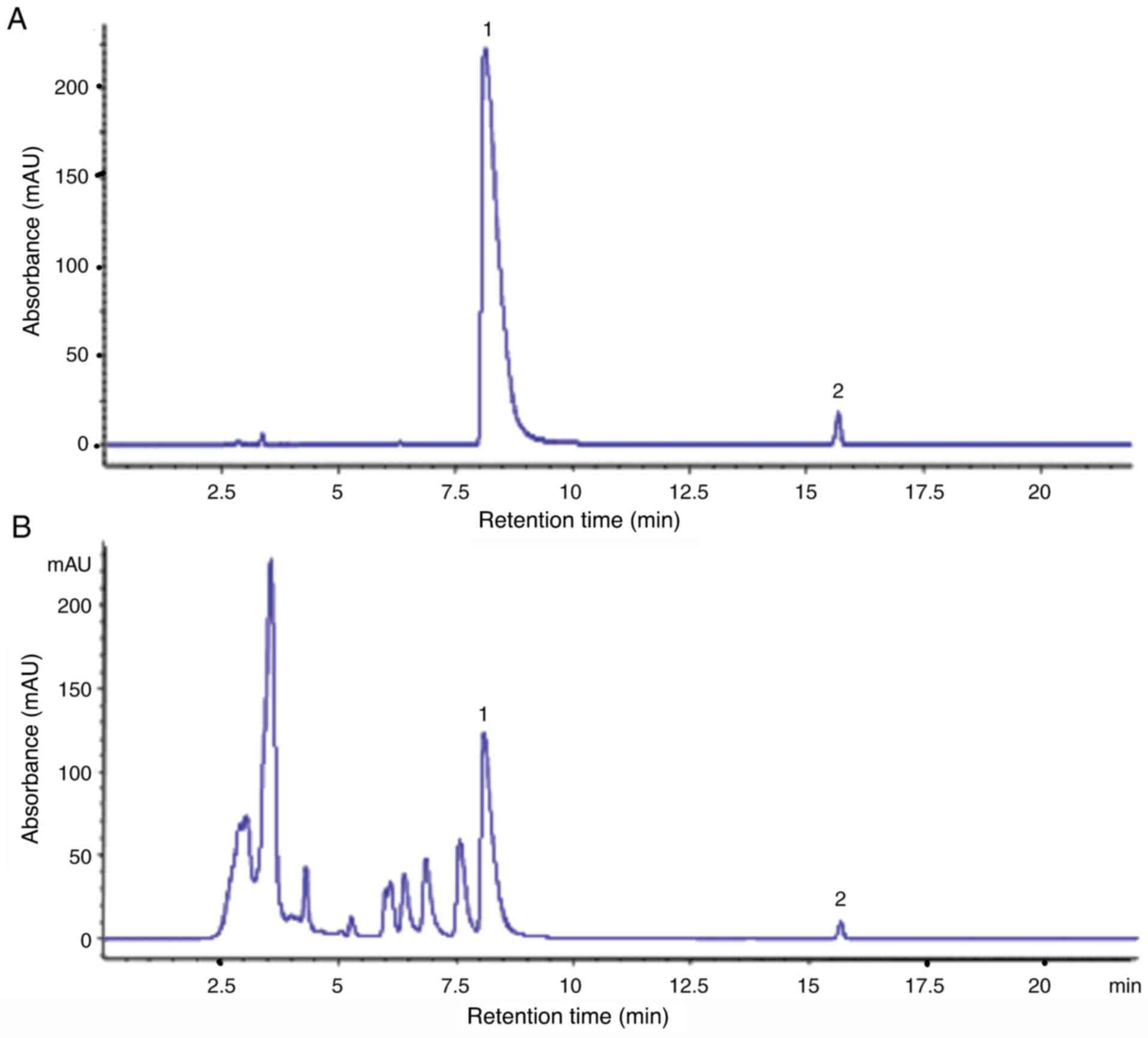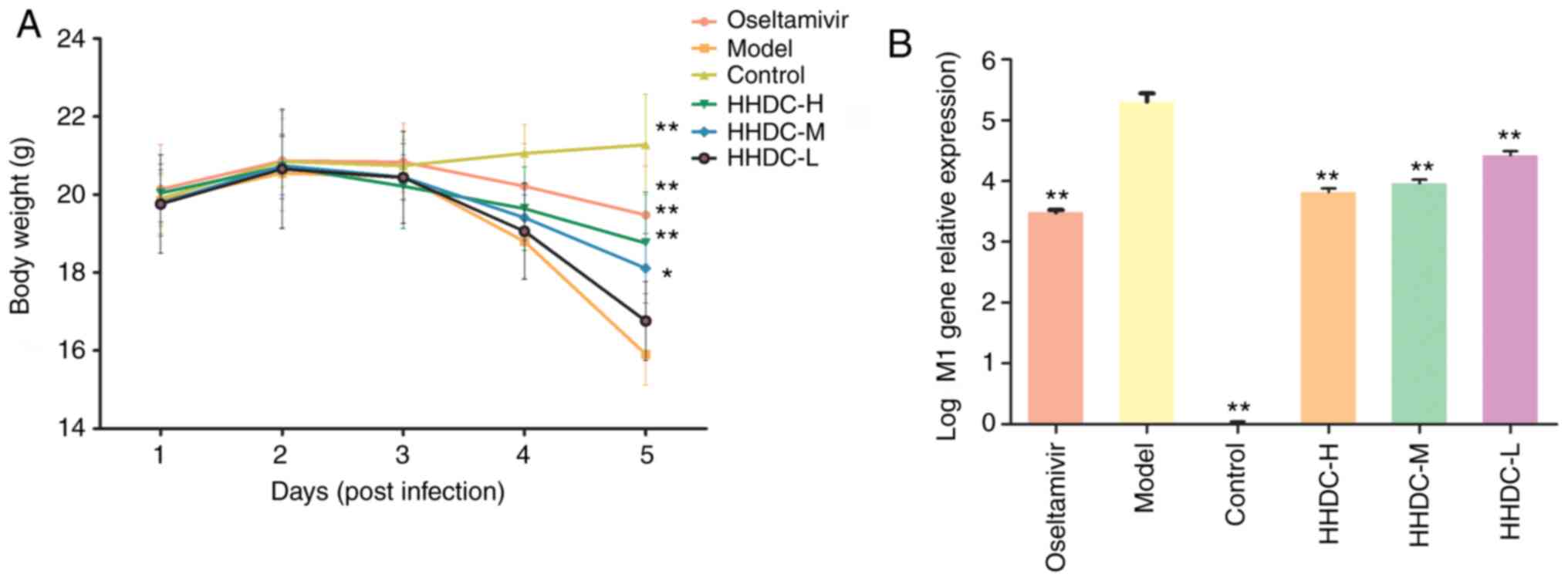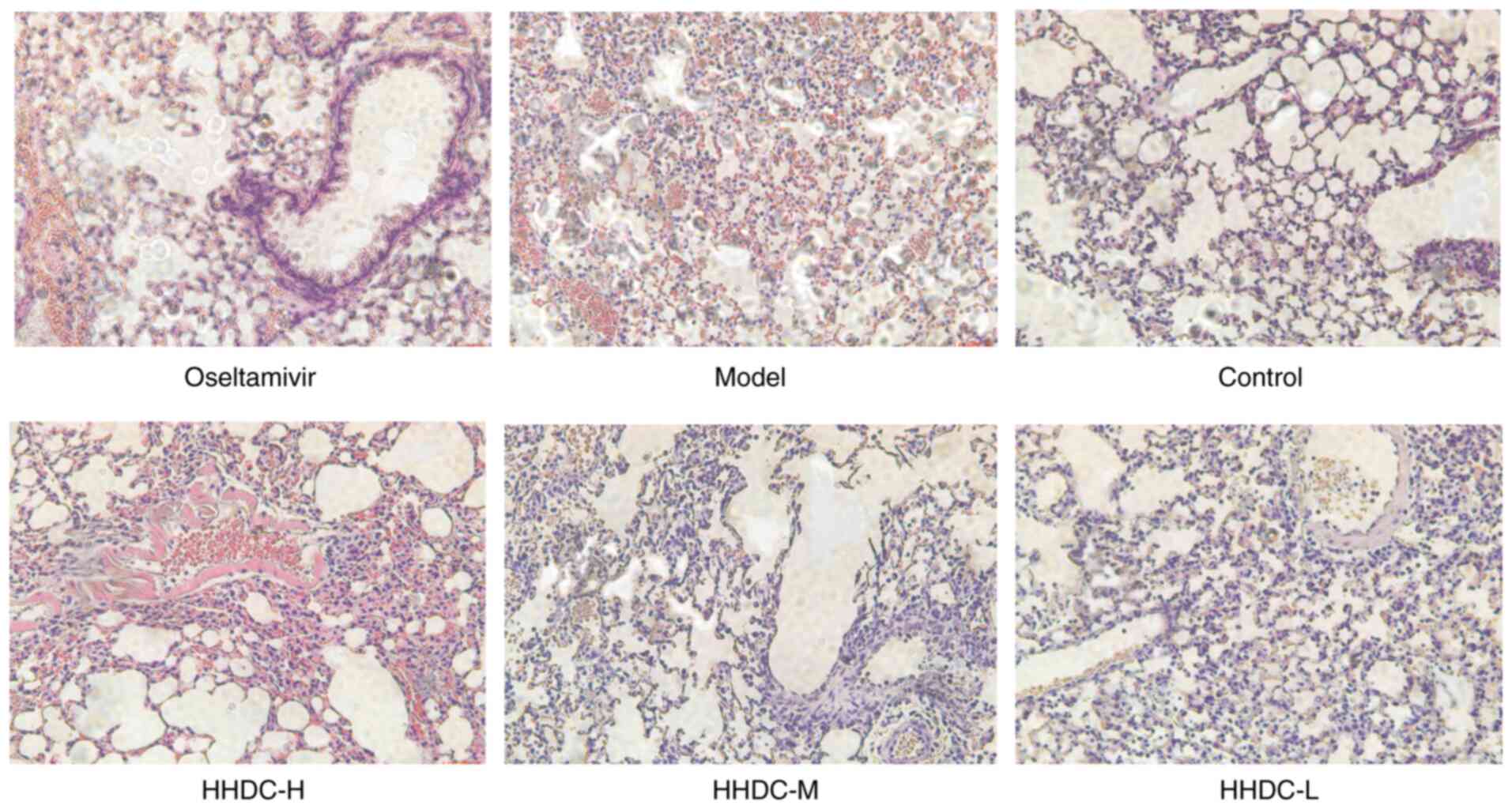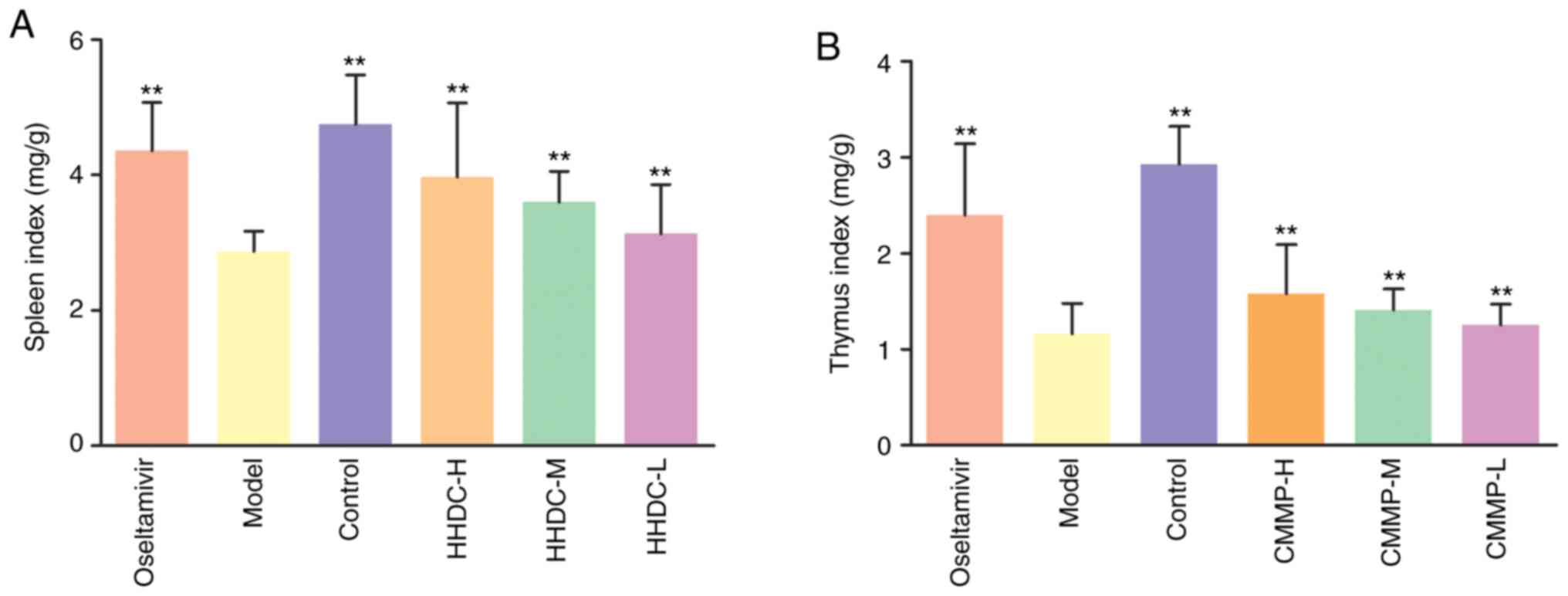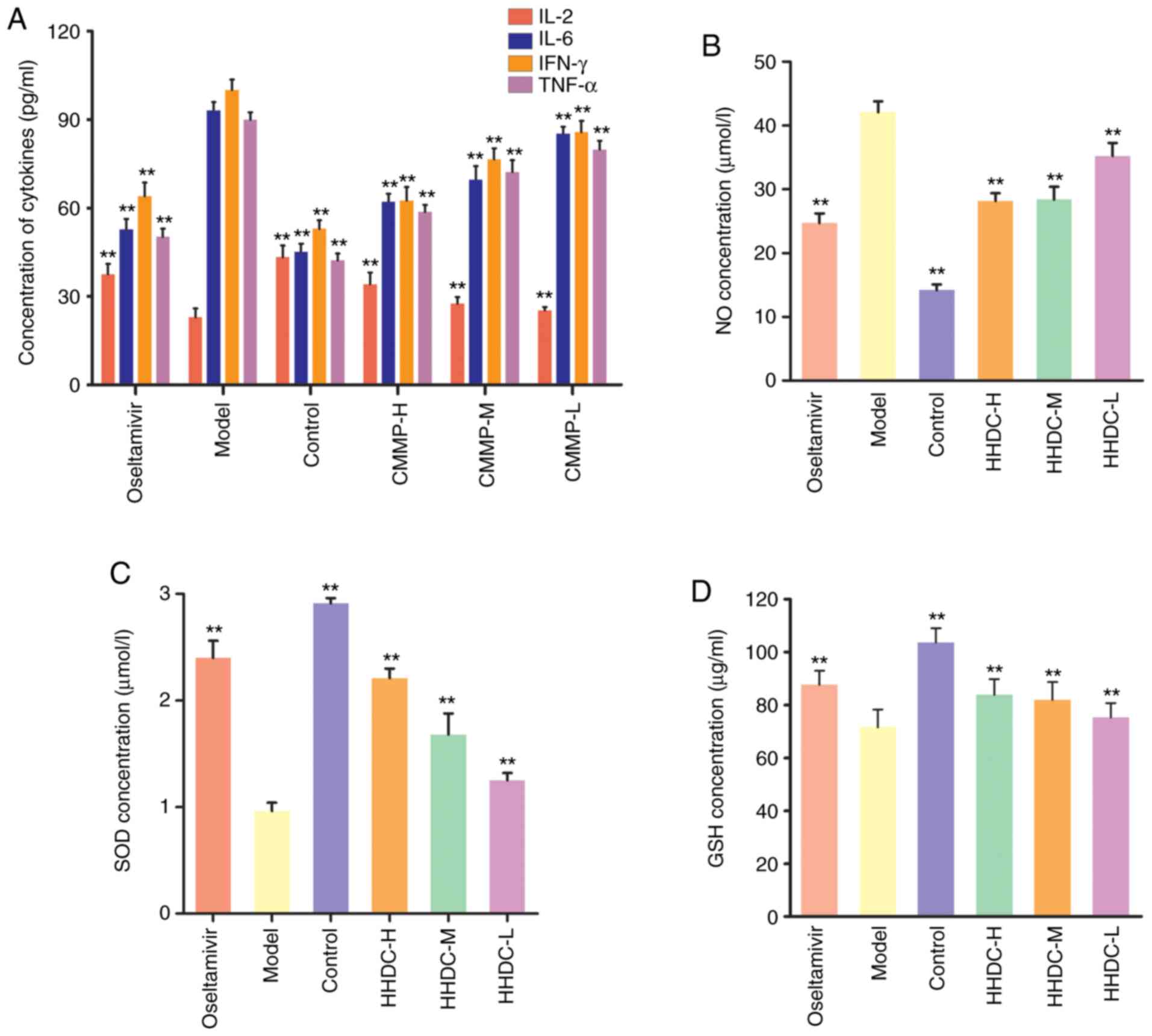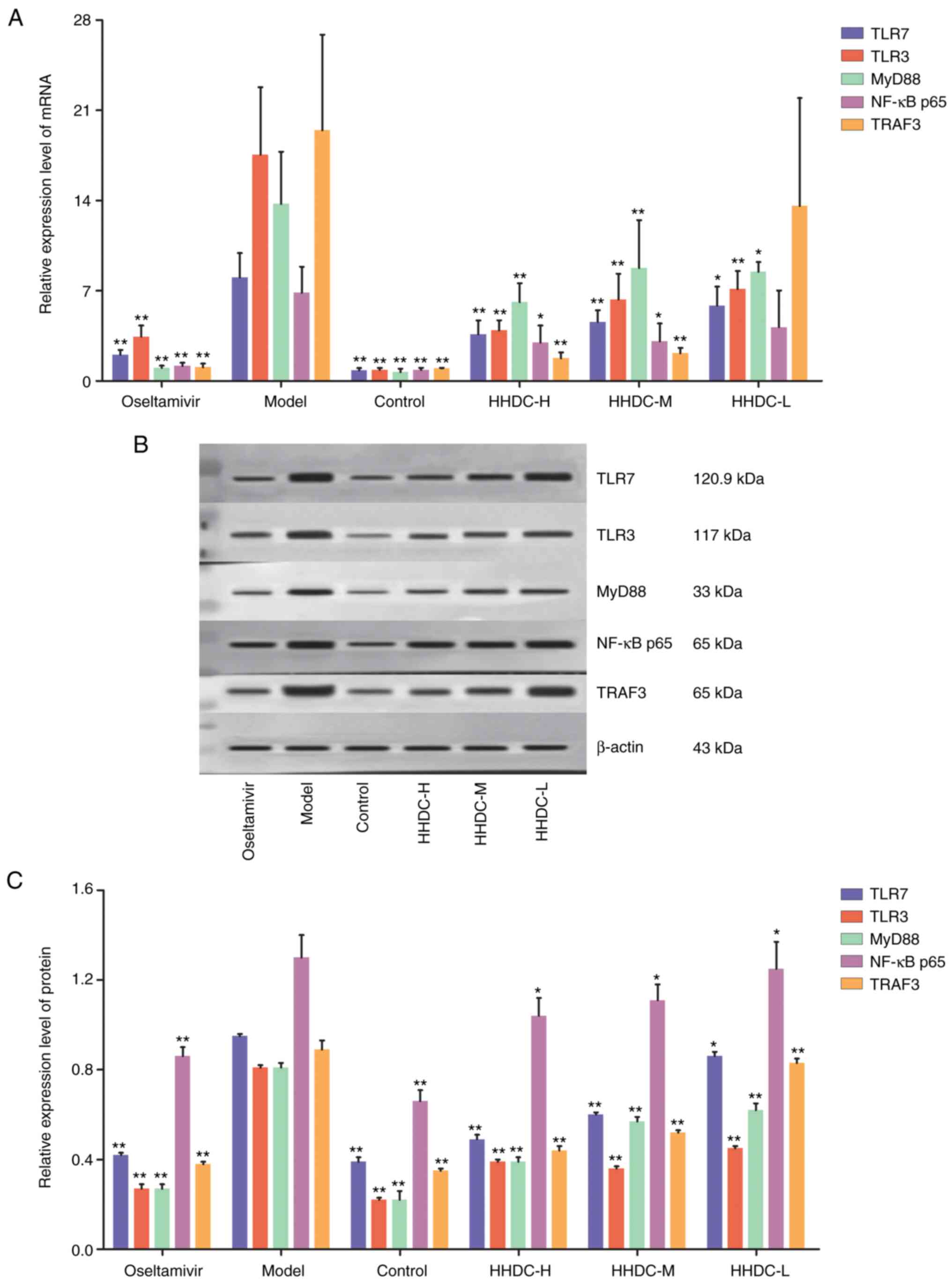|
1
|
Fasanmi OG, Odetokun IA, Balogun FA and
Fasina FO: Public health concerns of highly pathogenic avian
influenza H5N1 endemicity in Africa. Vet World. 10:1194–1204.
2017.PubMed/NCBI View Article : Google Scholar
|
|
2
|
Hurt AC, Besselaar TG, Daniels RS, Ermetal
B, Fry A, Gubareva L, Huang W, Lackenby A, Lee RT, Lo J, et al:
Global update on the susceptibility of human influenza viruses to
neuraminidase inhibitors, 2014-2015. Antiviral Res. 132:178–185.
2016.PubMed/NCBI View Article : Google Scholar
|
|
3
|
Lansbury LE, Smith S, Beyer W, Karamehic
E, Pasic-Juhas E, Sikira H, Mateus A, Oshitani H, Zhao H, Beck CR
and Nguyen-Van-Tam JS: Effectiveness of 2009 pandemic influenza
A(H1N1) vaccines: A systematic review and meta-analysis. Vaccine.
35:1996–2006. 2017.PubMed/NCBI View Article : Google Scholar
|
|
4
|
Song FX, Zhou J, Shi YX, Zhang ZY, Feng F,
Zhou JJ and Wang QL: Bedside chest radiography of novel influenza A
(H7N9) virus infections and follow-up findings after short-time
treatment. Chin Med J (Engl). 126:4440–4443. 2013.PubMed/NCBI
|
|
5
|
Fan VY, Jamison DT and Summers LH:
Pandemic risk: How large are the expected losses? Bull World Health
Organ. 96:129–134. 2018.PubMed/NCBI View Article : Google Scholar
|
|
6
|
Petrova VN and Russell CA: The evolution
of seasonal influenza viruses. Nat Rev Microbiol. 16:47–60.
2018.PubMed/NCBI View Article : Google Scholar
|
|
7
|
World Health Organization, Up to 650,000
people die of respiratory diseases linked to seasonal flu each
year. http://www.who.int/mediacentre/news/releases/2017/seasonal-flu/en/.
Accessed 13 October 2018.
|
|
8
|
Paules CI, Marston HD, Eisinger RW,
Baltimore D and Fauci AS: The pathway to a universal influenza
vaccine. Immunity. 47:599–603. 2017.PubMed/NCBI View Article : Google Scholar
|
|
9
|
Jackson RJ, Cooper KL, Tappenden P, Rees
A, Simpson EL, Read RC and Nicholson KG: Oseltamivir, zanamivir and
amantadine in the prevention of influenza: A systematic review. J
Infect. 62:14–25. 2011.PubMed/NCBI View Article : Google Scholar
|
|
10
|
Han X, Zhang DK, Guo YM, Feng WW, Dong Q,
Zhang CE, Zhou YF, Liu Y, Wang JB, Zhao YL, et al: Screening and
evaluation of commonly-used anti-influenza Chinese herbal medicines
based on anti-neuraminidase activity. Chin J Nat Med. 14:794–800.
2016.PubMed/NCBI View Article : Google Scholar
|
|
11
|
Kumar B, Asha K, Khanna M, Ronsard L,
Meseko CA and Sanicas M: The emerging influenza virus threat:
Status and new prospects for its therapy and control. Arch Virol.
163:831–844. 2018.PubMed/NCBI View Article : Google Scholar
|
|
12
|
Peng XQ, Zhou HF, Zhang YY, Yang JH, Wan
HT and He Y: Antiviral effects of Yinhuapinggan granule
against influenza virus infection in the ICR mice model. J Nat Med.
70:75–88. 2016.PubMed/NCBI View Article : Google Scholar
|
|
13
|
Li JH, Wang RQ, Guo WJ and Li JS: Efficacy
and safety of traditional Chinese medicine for the treatment of
influenza A (H1N1): J Chin Med. Assoc. 79:281–291. 2016.PubMed/NCBI View Article : Google Scholar
|
|
14
|
Liu X, Zhang M, He L and Li Y: Chinese
herbs combined with Western medicine for severe acute respiratory
syndrome (SARS). Cochrane Database Syst Rev.
10(CD004882)2012.PubMed/NCBI View Article : Google Scholar
|
|
15
|
Ma LL, Ge M, Wang HQ, Yin JQ, Jiang JD and
Li YH: Antiviral activities of several oral traditional Chinese
medicines against influenza viruses. Evid Based Complement Alternat
Med. 2015(367250)2015.PubMed/NCBI View Article : Google Scholar
|
|
16
|
Zhang HH, Yu WY, Li L, Wu F, Chen Q, Yang
Y and Yu CH: Protective effects of diketopiperazines from Moslae
Herba against influenza A virus-induced pulmonary inflammation
via inhibition of viral replication and platelets aggregation. J
Ethnopharmacol. 215:156–166. 2018.PubMed/NCBI View Article : Google Scholar
|
|
17
|
Cheng TF, Jia YR, Zuo Z, Dong X, Zhou P,
Li P and Li F: Quality assessment of traditional Chinese medicine
herb couple by high-performance liquid chromatography and mass
spectrometry combined with chemometrics. J Sep Sci. 39:1223–1231.
2016.PubMed/NCBI View Article : Google Scholar
|
|
18
|
Pan T, Cheng TF, Jia YR, Li P and Li F:
Anti-rheumatoid arthritis effects of traditional Chinese herb
couple in adjuvant-induced arthritis in rats. J Ethnopharmacol.
205:1–7. 2017.PubMed/NCBI View Article : Google Scholar
|
|
19
|
Zhang ZJ: Treatise on Febrile Diseases.
People's Health Publishing House, Beijing, 2005.
|
|
20
|
Hsieh CF, Lo CW, Liu CH, Lin S, Yen HR,
Lin TY and Horng JT: Mechanism by which ma-xing-shi-gan-tang
inhibits the entry of influenza virus. J Ethnopharmacol. 143:57–67.
2012.PubMed/NCBI View Article : Google Scholar
|
|
21
|
Ding Y, Zeng L, Li R, Chen Q, Zhou B, Chen
Q, Cheng PL, Yutao W, Zheng J, Yang Z and Zhang F: The Chinese
prescription lianhuaqingwen capsule exerts anti-influenza activity
through the inhibition of viral propagation and impacts immune
function. BMC Complement Altern Med. 17(130)2017.PubMed/NCBI View Article : Google Scholar
|
|
22
|
Wu QF, Zhu WR, Yan YL, Zhang XX, Jiang YQ
and Zhang FL: Anti-H1N1 influenza effects and its possible
mechanism of Huanglian Xiangru Decoction. J Ethnopharmacol.
185:282–288. 2016.PubMed/NCBI View Article : Google Scholar
|
|
23
|
Chen G, Wu QF, Yan YL, Qian XW and Zhang
XX: College of Pharmaceutical Science, Zhejiang Chinese Medical
University. Data analysis for compatibility of Rhizoma
Coptidis-cortex magnoliae officinalis herbal pair. Chin J Exp
Traditional Med Formul. 22:211–216. 2016.
|
|
24
|
Wang N, Tan HY, Li L, Yuen MF and Feng Y:
Berberine and Coptidis Rhizoma as potential anticancer agents:
Recent updates and future perspectives. J Ethnopharmacol.
176:35–48. 2015.PubMed/NCBI View Article : Google Scholar
|
|
25
|
Li H, Liu X, Zhu Y, Liu Y and Wang Y:
Magnolol derivative 002C-3 protects brain against
ischemia-reperfusion injury via inhibiting apoptosis and autophagy.
Neurosci Lett. 588:178–183. 2015.PubMed/NCBI View Article : Google Scholar
|
|
26
|
Park H, Kim HS, Eom SJ, Kim KT and Paik
HD: Antioxidative and anticanceric activities of magnolia
(Magnolia denudata) flower petal extract fermented by
pediococcus acidilactici KCCM 11614. Molecules. 20:12154–12165.
2015.PubMed/NCBI View Article : Google Scholar
|
|
27
|
Wu XN, Yu CH, Cai W, Hua J, Li SQ and Wang
W: Protective effect of a polyphenolic rich extract from Magnolia
officinalis bark on influenza virus-induced pneumonia in mice. J
Ethnopharmacol. 134:191–194. 2011.PubMed/NCBI View Article : Google Scholar
|
|
28
|
Enkhtaivan G, Muthuraman P, Kim DH and
Mistry B: Discovery of berberine based derivatives as
anti-influenza agent through blocking of neuraminidase. Bioorg Med
Chem. 25:5185–5193. 2017.PubMed/NCBI View Article : Google Scholar
|
|
29
|
Wu Y, Li JQ, Kim YJ, Wu J, Wang Q and Hao
Y: In vivo and in vitro antiviral effects of berberine on influenza
virus. Chin J Integr Med. 17:444–452. 2011.PubMed/NCBI View Article : Google Scholar
|
|
30
|
Saganuwan SA: A modified arithmetical
method of Reed and Muench for determination of a relatively ideal
median lethal dose (LD50). Afr J Pharm Pharmacol.
5:1543–1546. 2011.
|
|
31
|
Zhang XX, Wu QF, Yan YL and Zhang FL:
Inhibitory effects and related molecular mechanisms of total
flavonoids in Mosla chinensis Maxim against H1N1 influenza
virus. Inflamm Res. 67:179–189. 2018.PubMed/NCBI View Article : Google Scholar
|
|
32
|
Livak KJ and Schmittgen TD: Analysis of
relative gene expression data using real-time quantitative PCR and
the 2(-Delta Delta C(T)) method. Methods. 25:402–408.
2001.PubMed/NCBI View Article : Google Scholar
|
|
33
|
Lester SN and Li K: Toll-like receptors in
antiviral innate immunity. J Mol Biol. 426:1246–1264.
2014.PubMed/NCBI View Article : Google Scholar
|
|
34
|
Robinson KM, Kolls JK and Alcorn JF: The
immunology of influenza virus-associated bacterial pneumonia. Curr
Opin Immunol. 34:59–67. 2015.PubMed/NCBI View Article : Google Scholar
|
|
35
|
Zhu H, Lu X, Ling L, Li H, Ou Y, Shi X, Lu
Y, Zhang Y and Chen D: Houttuynia cordata polysaccharides
ameliorate pneumonia severity and intestinal injury in mice with
influenza virus infection. J Ethnopharmacol. 218:90–99.
2018.PubMed/NCBI View Article : Google Scholar
|
|
36
|
Klatzmann D and Abbas AK: The promise of
low-dose interleukin-2 therapy for autoimmune and inflammatory
diseases. Nat Rev Immunol. 15:283–294. 2015.PubMed/NCBI View
Article : Google Scholar
|
|
37
|
Zelaya H, Tada A, Vizoso-Pinto MG, Salva
S, Kanmani P, Agüero G, Alvarez S, Kitazawa H and Villena J: Nasal
priming with immunobiotic Lactobacillus rhamnosus, modulates
inflammation-coagulation interactions and reduces influenza
virus-associated pulmonary damage. Inflamm Res. 64:589–602.
2015.PubMed/NCBI View Article : Google Scholar
|
|
38
|
Xu MJ, Liu BJ, Wang CL, Wang GH, Tian Y,
Wang SH, Li J, Li PY, Zhang RH, Wei D, et al:
Epigallocatechin-3-gallate inhibits TLR4 signaling through the
67-kDa laminin receptor and effectively alleviates acute lung
injury induced by H9N2 swine influenza virus. Int Immunopharmacol.
52:24–33. 2017.PubMed/NCBI View Article : Google Scholar
|
|
39
|
Liu M, Chen F, Liu T, Chen F, Liu S and
Yang J: The role of oxidative stress in influenza virus infection.
Microbes Infect. 19:580–586. 2017.PubMed/NCBI View Article : Google Scholar
|
|
40
|
Lee MS and Kim YJ: Signaling pathways
downstream of pattern-recognition receptors and their cross talk.
Annu Rev Biochem. 76:447–480. 2007.PubMed/NCBI View Article : Google Scholar
|
|
41
|
Kawasaki T and Kawai T: Toll-like receptor
signaling pathways. Front Immunol. 5(461)2014.PubMed/NCBI View Article : Google Scholar
|
|
42
|
Baumann CL, Aspalter IM, Sharif O,
Pichlmair A, Bluml S, Grebien F, Bruckner M, Pasierbek P, Aumayr K,
Planyavsky M, et al: CD14 is a coreceptor of toll-like receptors 7
and 9. J Exp Med. 207:2689–2701. 2010.PubMed/NCBI View Article : Google Scholar
|
|
43
|
Chen Z, Liu Y, Sun B, Li H, Dong J, Zhang
L, Wang L, Wang P, Zhao Y and Chen C: Polyhydroxylated
metallofullerenols stimulate IL-1β secretion of macrophage through
TLRs/MyD88/NF-κB pathway and NLRP3 inflammasome
activation. Small. 10:2362–2372. 2014.PubMed/NCBI View Article : Google Scholar
|
|
44
|
Lee N, Wong CK, Hui DS, Lee SK, Wong RY,
Ngai KL, Chan MC, Chu YJ, Ho AW, Lui GC, et al: Role of human
Toll-like receptors in naturally occurring influenza A infections.
Influenza Other Respir Viruses. 7:666–675. 2013.PubMed/NCBI View Article : Google Scholar
|
|
45
|
Terán-Cabanillas E, Montalvo-Corral M,
Silva-Campa E, Caire-Juvera G, Moya-Camarena SY and Hernández J:
Production of interferon α and β, pro-inflammatory cytokines and
the expression of suppressor of cytokine signaling (SOCS) in obese
subjects infected with influenza A/H1N1. Clin Nutr. 33:922–926.
2014.PubMed/NCBI View Article : Google Scholar
|
|
46
|
Li L, Wei K, Lu FG, Cai L, Zhang B, Zhang
SY, Gao Q and Dai B: Effect of Maxing Shigan Decoction against type
A influenza virus infection in mice induced by viral lung injury
based on TLR4-MyD88-TRAF6 signal pathways. Chin Traditional Herbal
Drugs. 48:1591–1596. 2017.
|
|
47
|
Lin CJ, Lin HJ, Chen TH, Hsu YA, Liu CS,
Hwang GY and Wan L: Polygonum cuspidatum and its active
components inhibit replication of the influenza virus through
Toll-Like receptor 9-induced interferon beta expression. PLoS One.
10(e0117602)2015.PubMed/NCBI View Article : Google Scholar
|
|
48
|
Liu R, He T, Zeng N, Chen T, Gou L and Liu
JW: Mechanism of anti-influenza virus of volatile oil in
Cinnamomi Ramulus and cinnamaldehyde. Chin Traditional
Herbal Drugs. 44:1460–1464. 2013.
|















